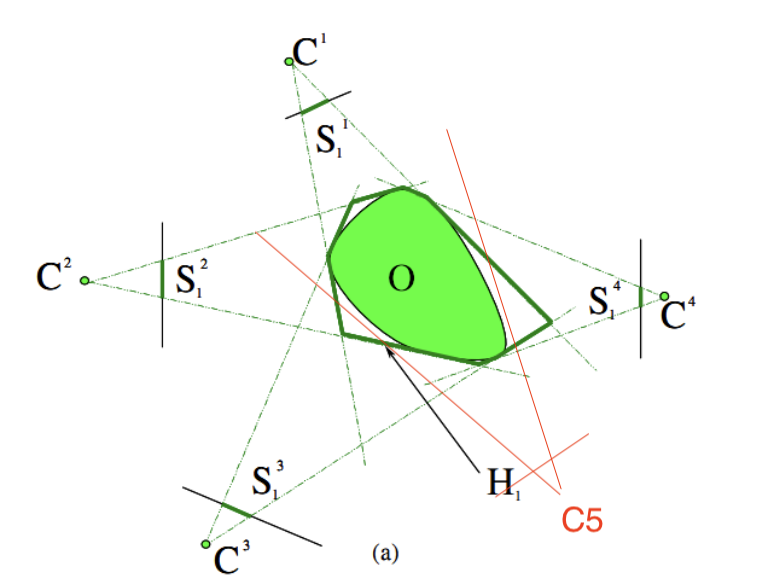Hello Yasamin,
While it's not the only purpose of the algorithm as you say, the visual hull can definitely be used to refine a silhouette. Imagine an image A where the object of interest is occluded by some other large object. The silhouette/mask of the object will be partial in this case. But if you can reconstruct a visual hull from other images, then it would be possible to project the hull back into image A to complete the missing part of the silhouette, despite it being occluded in the original image. While it will not be as precise as actually having the full object on camera, the approximation should be pretty good, depending on the shape of the object and positions of the other cameras.
While they should be pretty clear, let me also go through the other choices for the sake of completeness:
2. The visual hull does not capture texture, it uses no color information, only binary masks.
3. The visual hull can only capture a convex hull of the object, and will not be able to capture the concavities.
4. Each new image/camera will further constrain the convex hull and possibly make it *smaller*, closer to the original object's smallest possible convex hull. Making it bigger would be worse.
Best.


